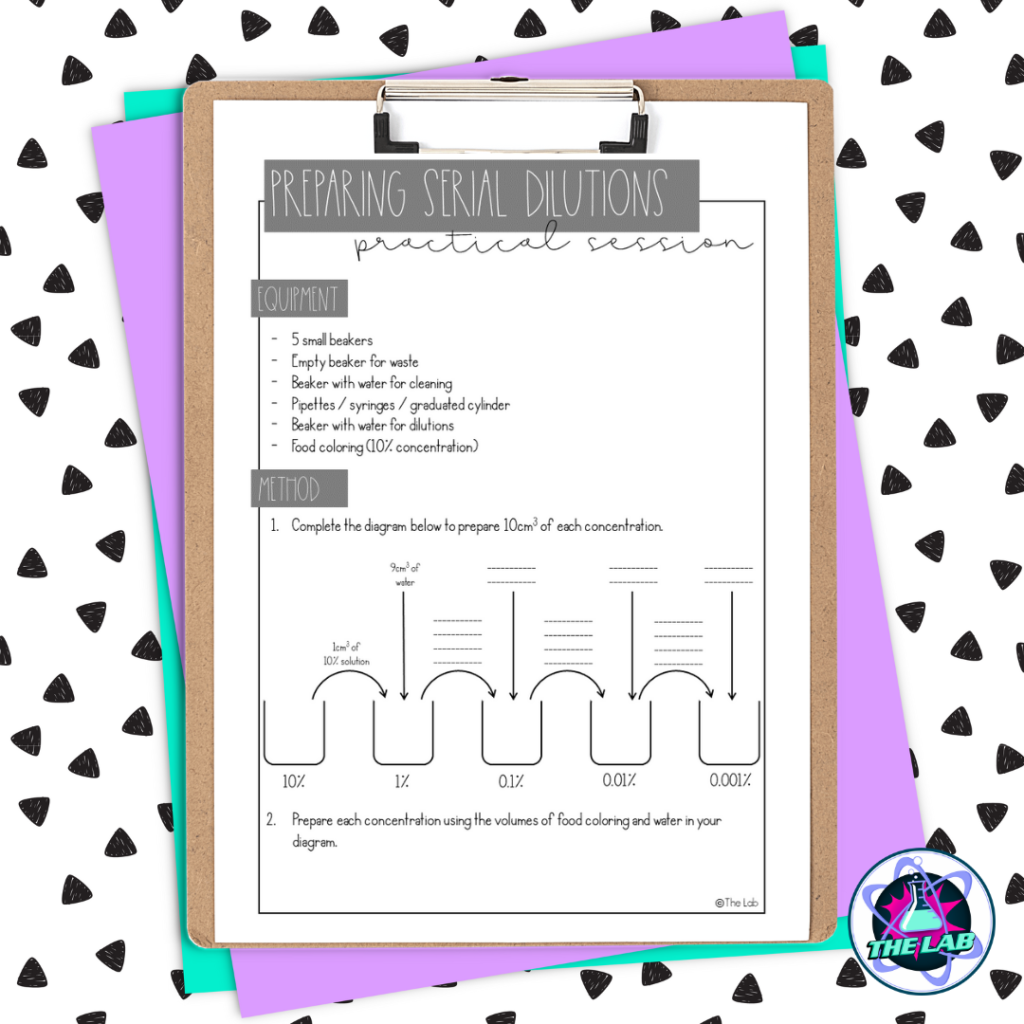It may sound like chemistry, but teaching dilutions is a crucial part of biology. Not all of your biology students will have a strong chemistry background, so it will be beneficial to go through this topic and let them practice diluting different solutions.
I will share some tips on how I approach this topic with my students. I usually include this in our Biochemistry unit.
Keeping it simple!

Many students start to panic when Math is involved, so I tend to keep it simple. I use Scribble Notes for them to organize their ideas and keep everything together.
I take time to focus on both simple and serial dilutions. The first time we do a dilution I let them use food coloring. This is a great visual to help them see the dilution and it is so easy to set up. You can grab this free lab activity to use with your students.
Simple Dilutions
With simple dilutions, we always draw a table. Students usually find this the easier of the two types. They can see the pattern and easily fill in the rest of the values.
Tip: When students have to prepare more than 10ml of a solution (for example, 50ml), I always tell them to work out the values for 10ml first and then multiply by 5. Let them complete several examples to practice.
Serial Dilutions

Most students seem to find serial dilutions slightly more difficult. I have found that it helps them to draw it out. Make sure that they double-check their math and then do as many practice examples as possible. Practicing serial dilutions with food coloring is very effective since they will see a drastic change in color intensity between consecutive dilutions.
Practicing these important skills will build student confidence and make labs more effective. I hope this easy, low prep Dilutions Lab will help your students to understand this concept and make your life a bit easier. Grab it here!



